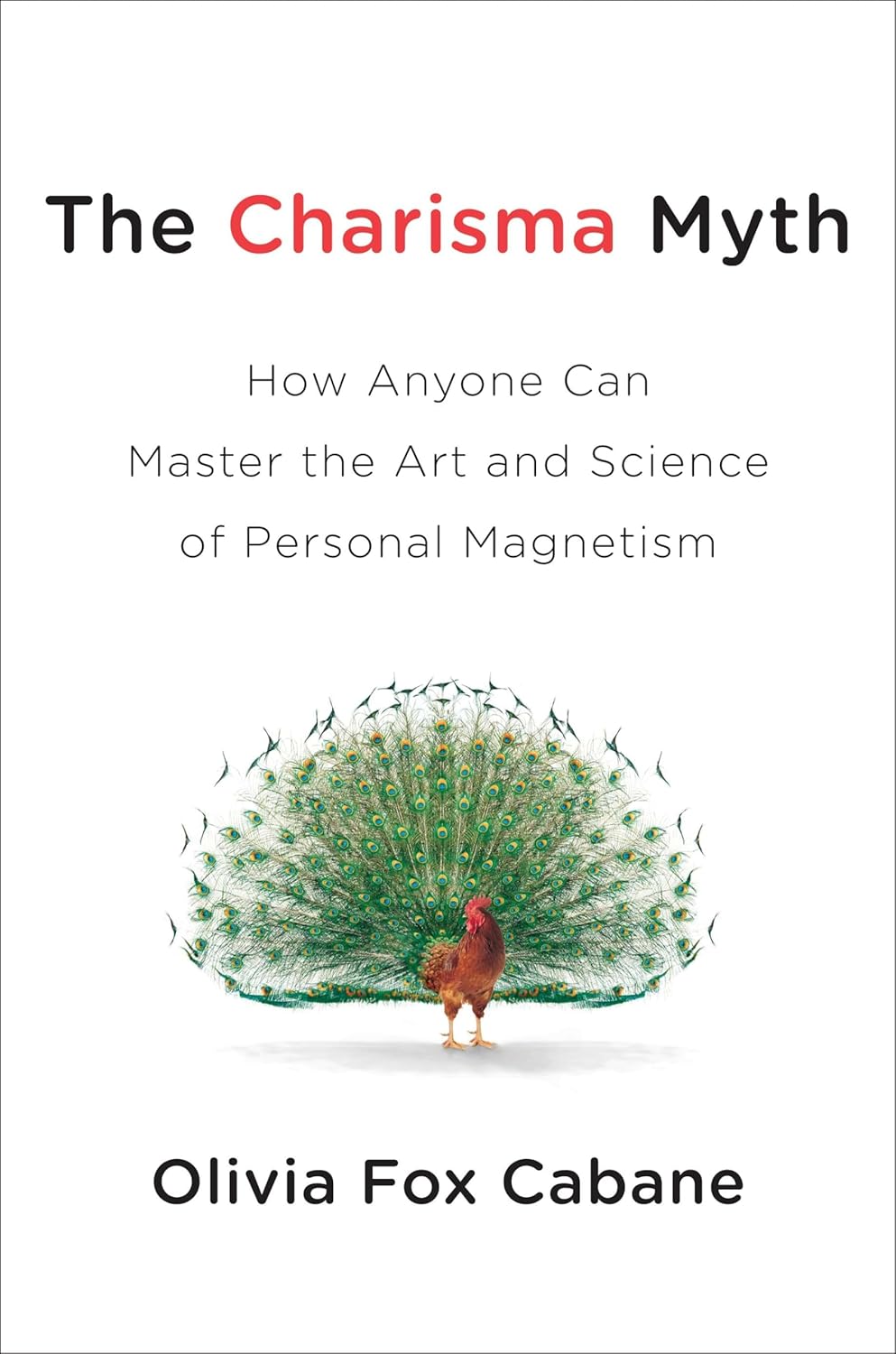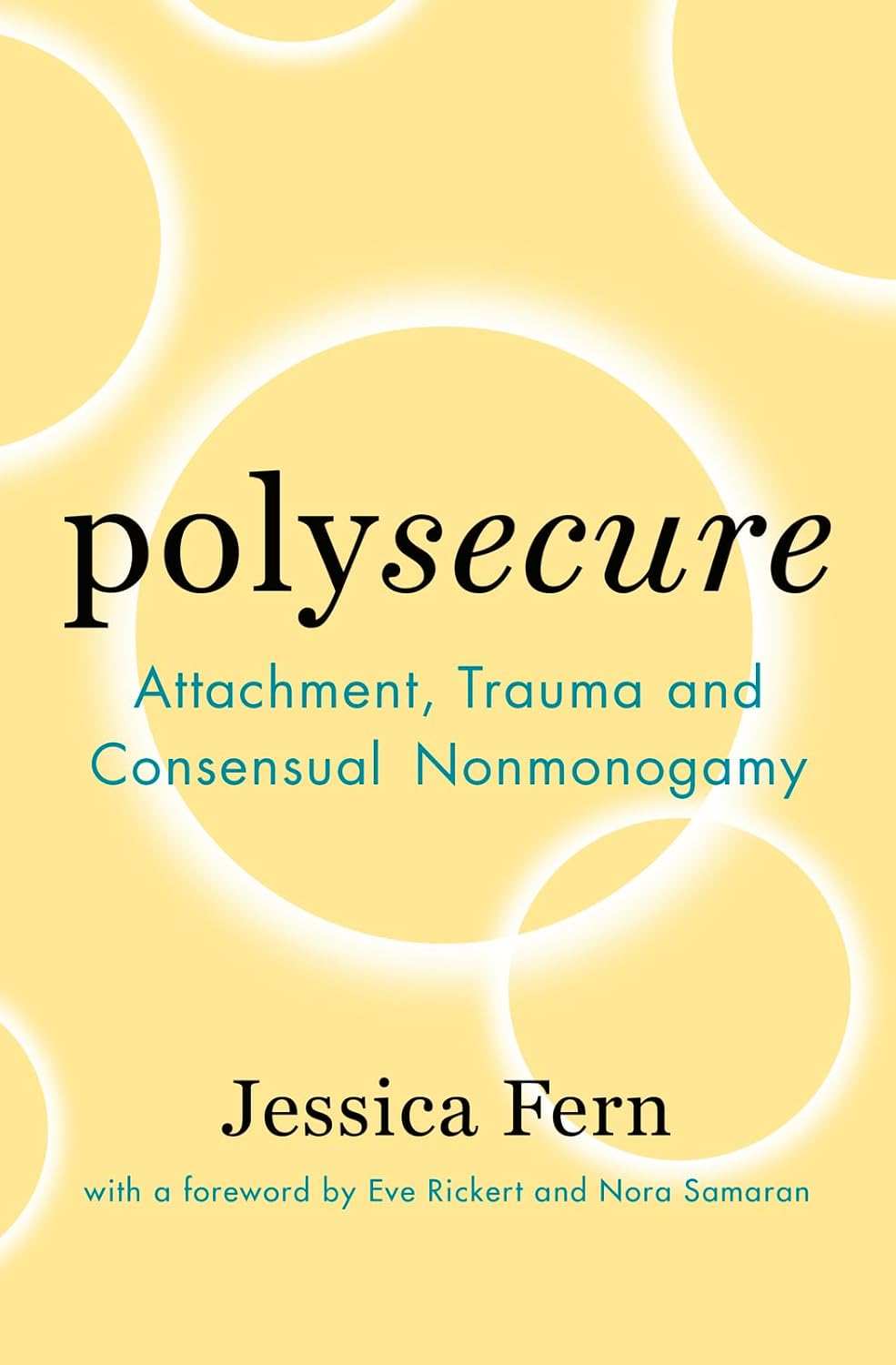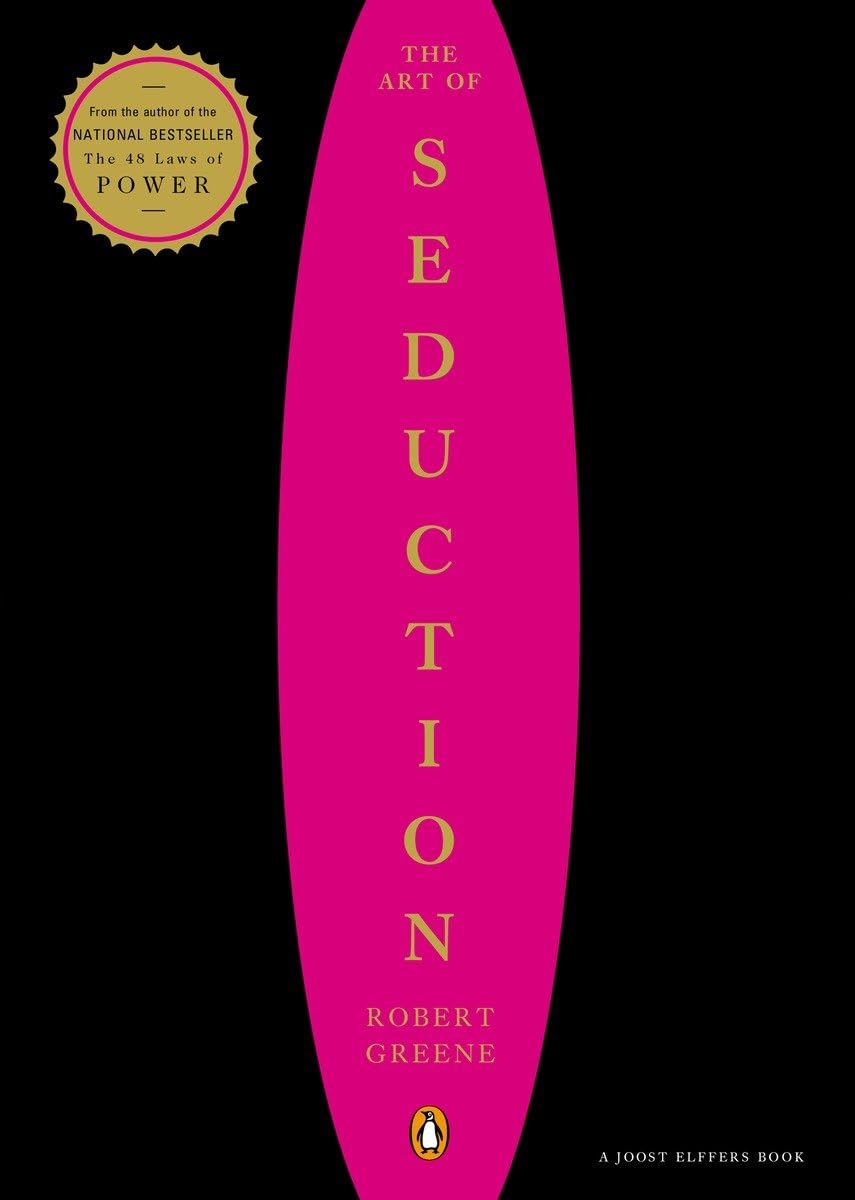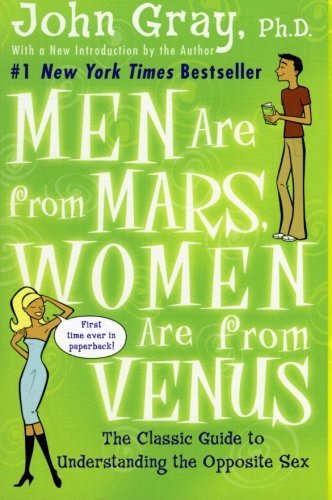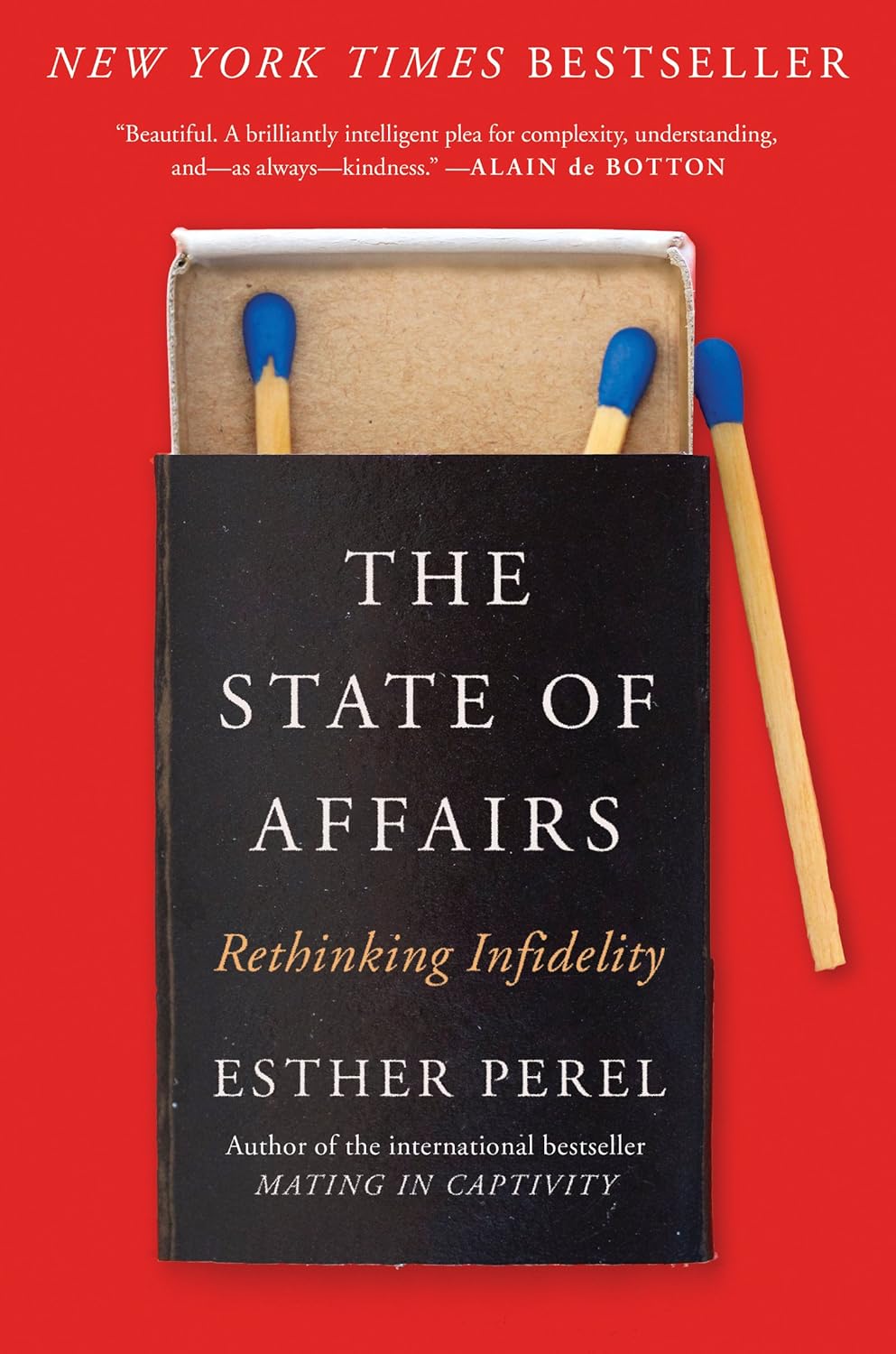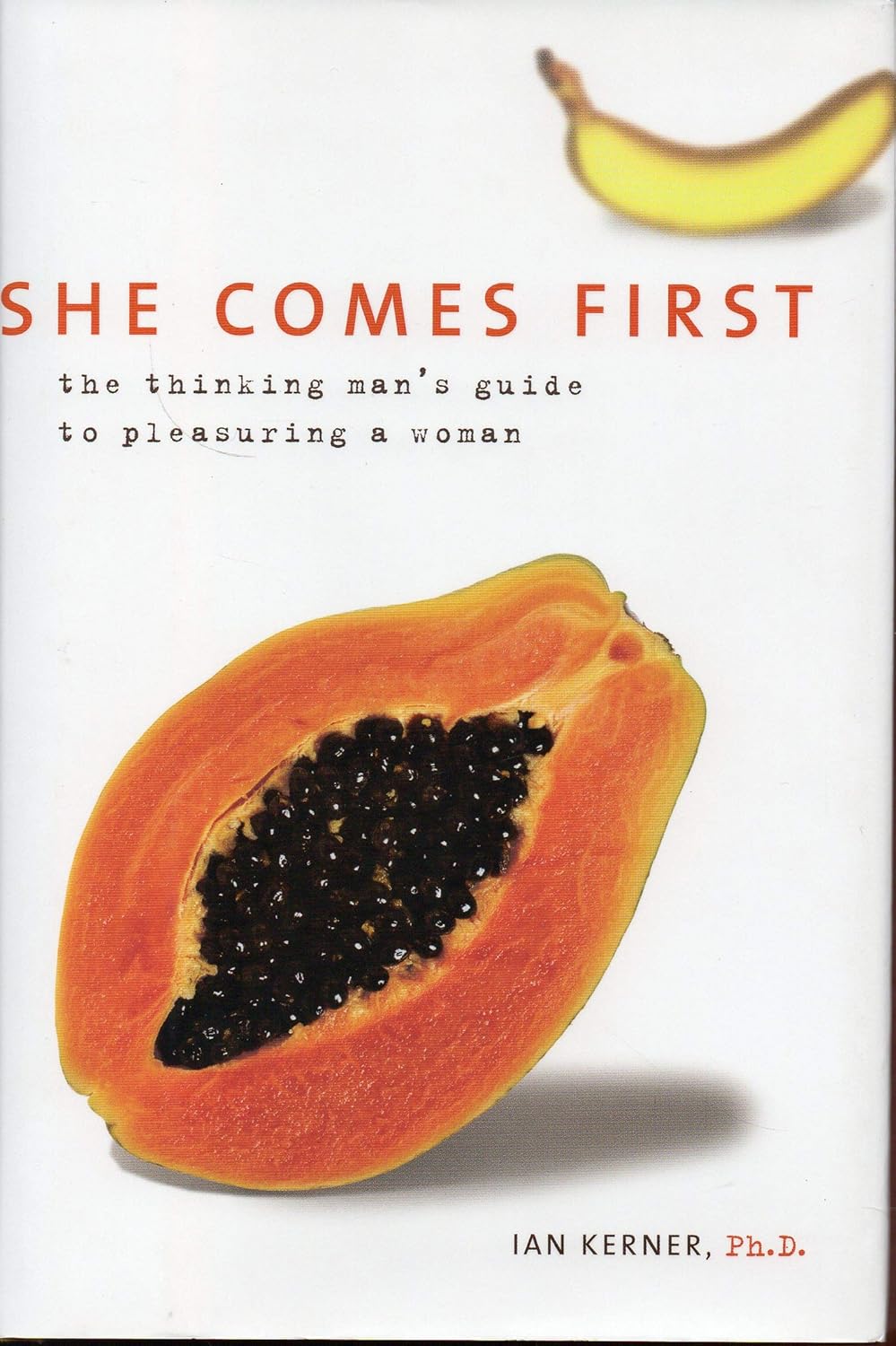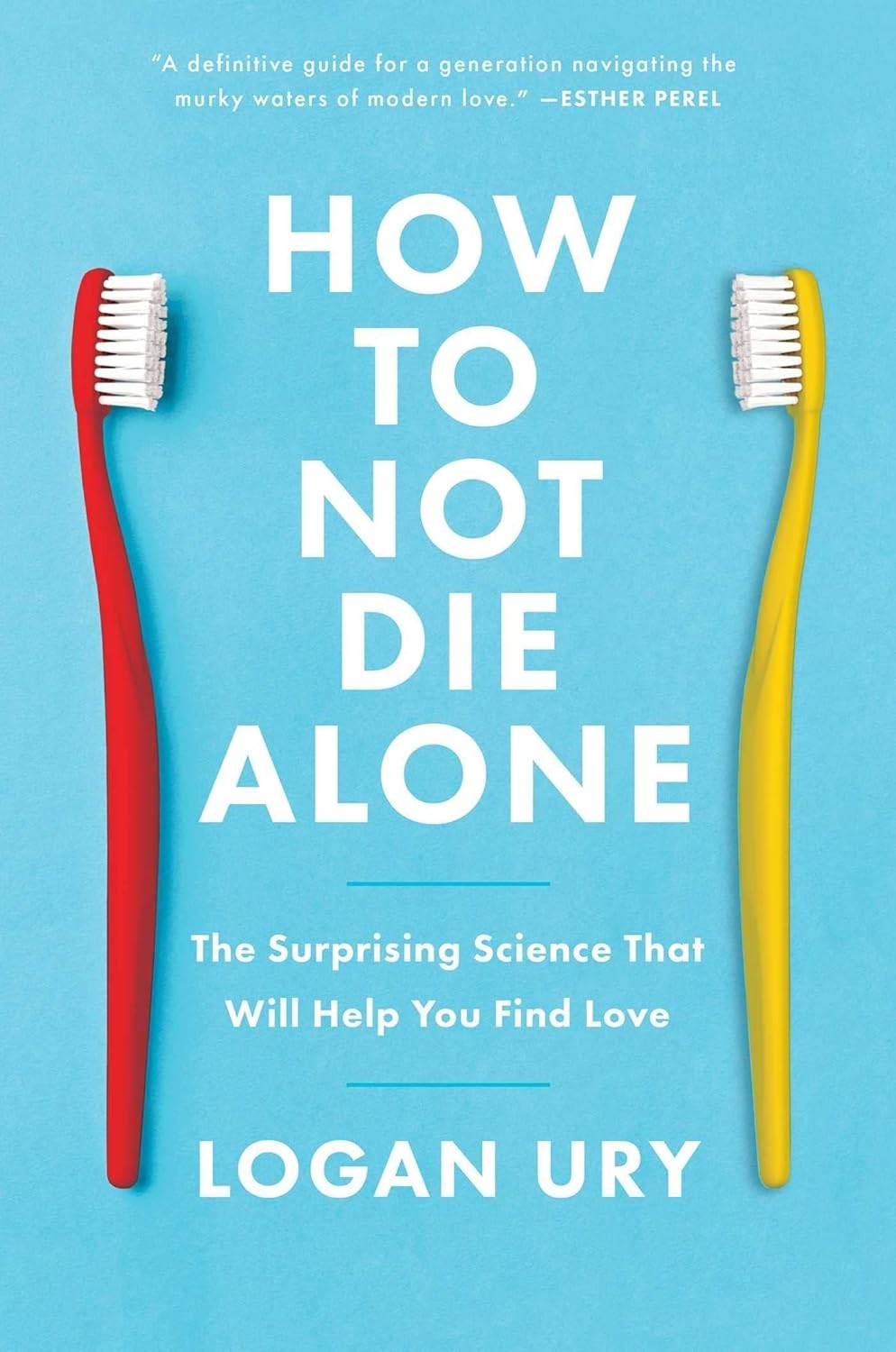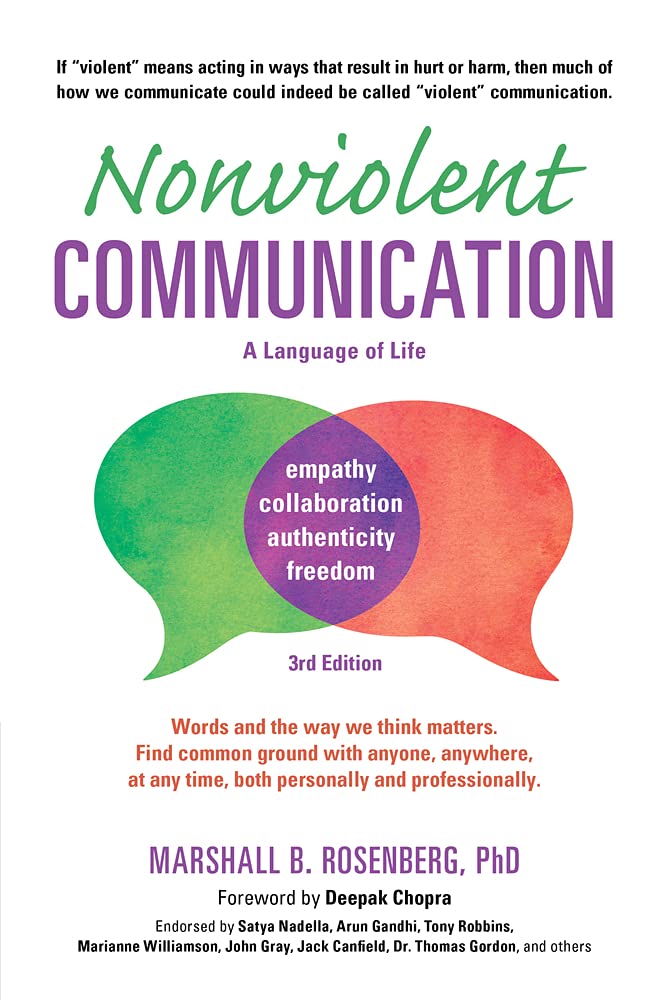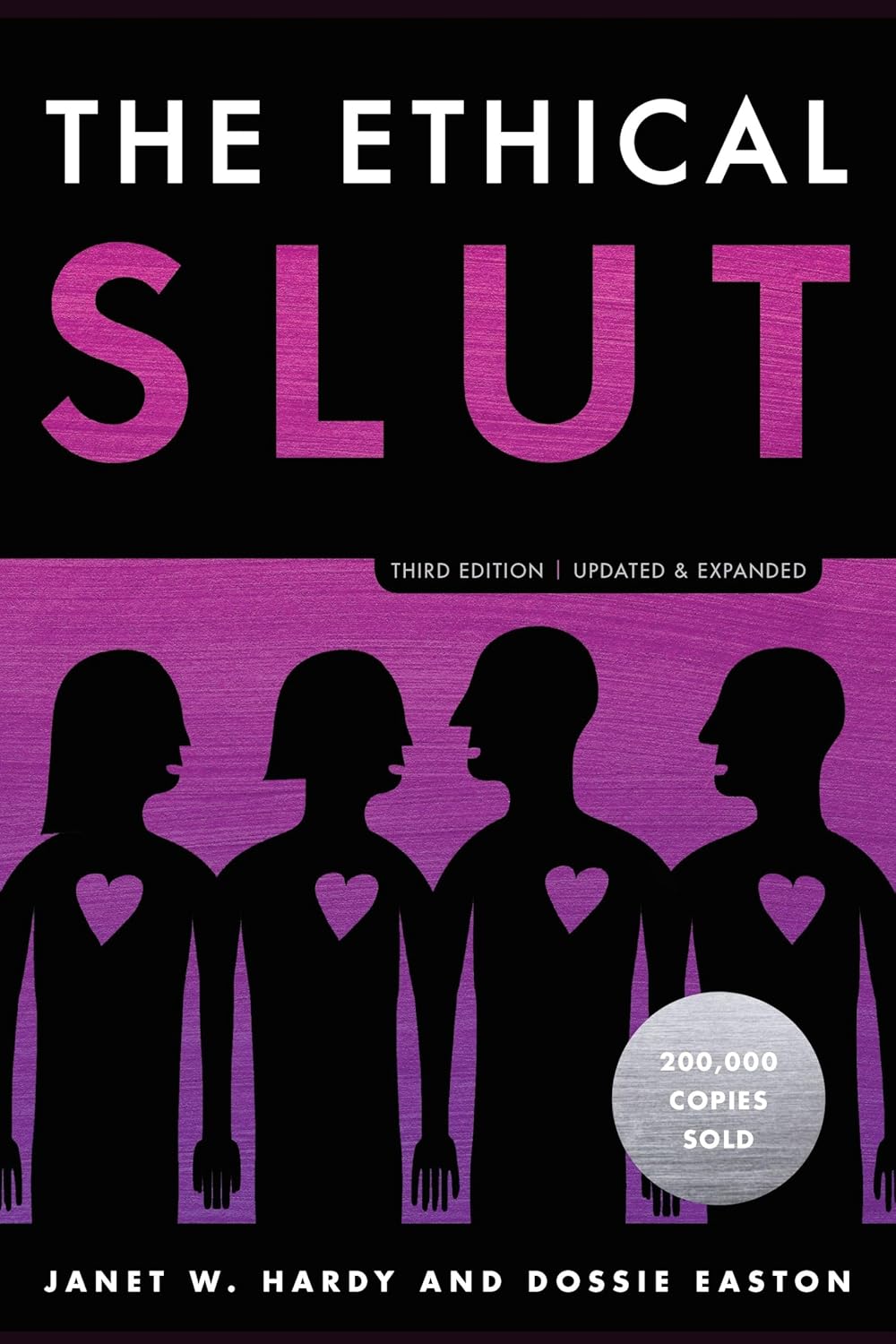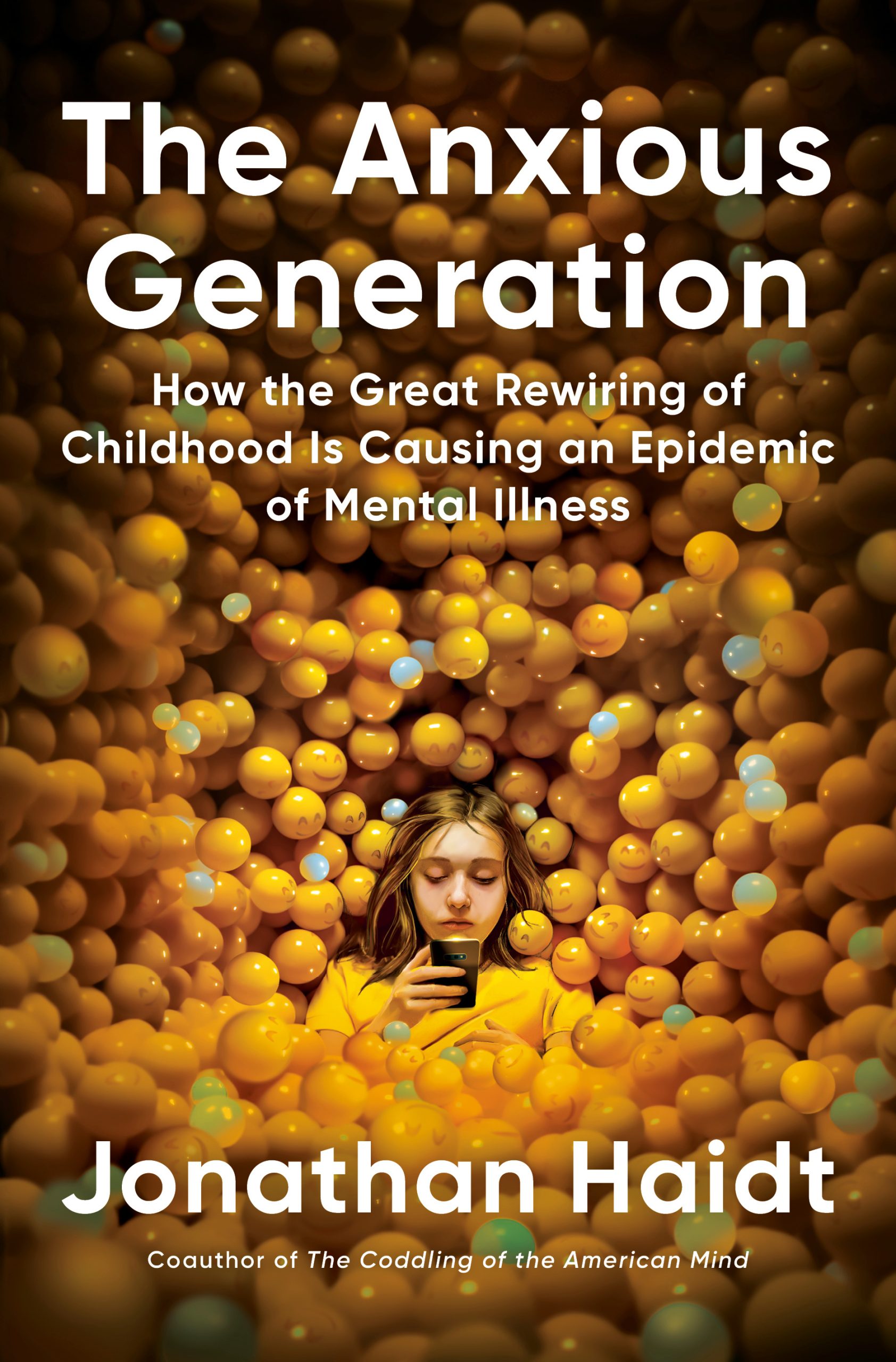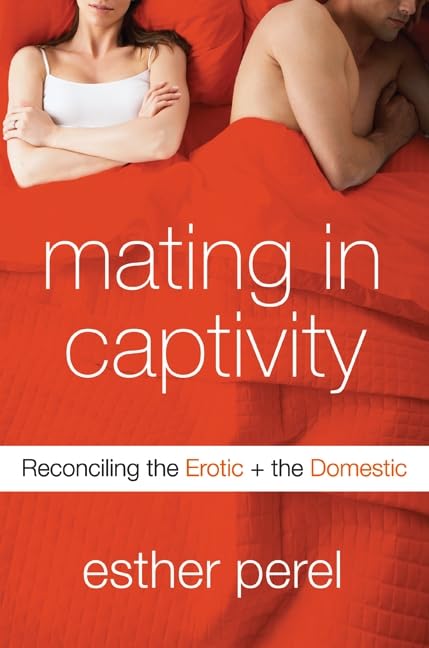
Buy The Book
Chapter
- ✦ 1. From Adventure to Captivity: Why the Quest for Security Saps Erotic Vitality
- ✦ 2. More Intimacy, Less Sex: Love Seeks Closeness, but Desire Needs Distance
- ✦ 3. The Pitfalls of Modern Intimacy: Talk Is Not the Only Avenue to Closeness
- ✦ 4. Democracy Versus Hot Sex: Desire and Egalitarianism Don’t Play by the Same Rules
- ✦ 5. Can Do! The Protestant Work Ethic Takes On the Degradation of Desire
- ✦ 6. Sex Is Dirty; Save It for Someone You Love: When Puritanism and Hedonism Collide
- ✦ 7. Erotic Blueprints: Tell Me How You Were Loved, and I’ll Tell You How You Make Love
- ✦ 8. Parenthood: When Three Threatens Two
- ✦ 9. Of Flesh and Fantasy: In the Sanctuary of the Erotic Mind We Find a Direct Route to Pleasure
- ✦ 10. The Shadow of the Third: Rethinking Fidelity
- ✦ 11. Putting the X Back in Sex: Bringing the Erotic Home
Mating in Captivity: Reconciling the Erotic and the Domestic
About
In *Mating in Captivity: Unlocking Erotic Intelligence*, psychotherapist Esther Perel investigates the persistent struggle between domestic intimacy and erotic desire. Drawing from her extensive experience with couples across cultural and social spectrums, she reveals how the comforts of emotional closeness in long-term relationships can often stifle passion. The book offers fresh perspectives on keeping the spark alive by embracing mystery, curiosity, and individuality within a partnership. Perel provides examples, cultural insights, and strategies to help couples navigate this delicate balance, making it a compelling read for those seeking to deepen their understanding of love, connection, and desire.
Esther Perel, a renowned psychotherapist and speaker, specializes in relationships and sexuality. Known for her TED Talks and global influence, she has become a leading voice in exploring human connection, intimacy, and desire.
For People
– Couples in long-term relationships
– Individuals exploring relationship dynamics
– Therapists or counselors specializing in relationships
– Readers interested in psychology and sexuality
– Partners seeking to rekindle intimacy

Spark
Review
Like this
✦ 1. From Adventure to Captivity: Why the Quest for Security Saps Erotic Vitality
Relationships are often built on the pursuit of safety and emotional closeness. People strive for a sense of stability in their partnerships, creating a predictable and secure environment that fosters love and trust. This foundation strengthens the bond between partners, but it can also unintentionally disrupt the erotic spark.
Erotic vitality, by its nature, thrives on the unknown and the unexpected. Passion feeds on mystery and curiosity, elements that often fade as partners grow increasingly familiar with one another. When everything about a relationship feels predictable, the excitement that once fueled desire can begin to wane.
Stability and security often lead to a merging of identities, where partners lose sight of each other as distinct individuals. This emotional closeness, though comforting, can stifle the tension and distance that passion requires. Erotic energy flourishes when there is room for individuality, when each partner retains their autonomy and remains a source of intrigue.
To rekindle erotic vitality, couples must embrace the paradox: the same closeness that nurtures love can sometimes hinder desire. By creating space for novelty and unpredictability within the relationship, partners can reignite the spark that first brought them together. Balancing intimacy with a sense of adventure allows love and desire to coexist.
Passion doesn’t require abandoning the safety of a relationship; it requires nurturing the tension between closeness and separateness. In this delicate balance, partners can rediscover the excitement and energy that keeps desire alive.
✦ 2. More Intimacy, Less Sex: Love Seeks Closeness, but Desire Needs Distance
Love and desire are often seen as complementary, but they operate on very different dynamics. Love thrives in closeness, where emotional intimacy creates a sense of safety and connection. People express love by building trust, sharing feelings, and fostering a deep sense of togetherness.
However, desire doesn’t grow in the same environment. Passion requires a sense of distance, where partners can experience longing and curiosity about one another. When relationships become overly focused on intimacy, they can lose the sense of separateness that fuels desire. Without this distance, partners may struggle to see each other as intriguing individuals.
Desire often arises in moments of discovery, when a partner’s individuality is on full display. Witnessing their passions, independence, or even their unpredictability can reignite physical attraction. This space between partners allows for mystery and anticipation, which are essential for sustaining passion over time.
Balancing love and desire means embracing both connection and independence. Partners must navigate the tension between their shared emotional bond and their need to maintain individuality. This doesn’t mean withdrawing but rather finding ways to appreciate each other’s uniqueness within the relationship.
By rediscovering the boundaries between “me” and “you,” couples can reignite their physical connection while maintaining emotional closeness. Love and desire don’t have to compete. When nurtured carefully, they can coexist, creating a relationship that feels both secure and exciting.
✦ 3. The Pitfalls of Modern Intimacy: Talk Is Not the Only Avenue to Closeness
Modern relationships often prioritize verbal communication as the primary way to build closeness. Couples are encouraged to express their feelings, talk through their concerns, and analyze their relationship dynamics. While this focus on dialogue can create understanding, it can also lead to an over-reliance on talking as the sole means of connection.
Intimacy isn’t limited to words. In fact, some of the deepest forms of closeness are nonverbal. Touch, shared experiences, and even moments of silence can create bonds that words cannot. When partners rely too heavily on conversation, they may neglect these other, equally important avenues of connection.
Too much emphasis on talking can also create pressure within the relationship. Partners may feel obligated to constantly analyze their emotions or solve every issue through dialogue. This can make intimacy feel like a task rather than a natural, organic experience.
True closeness often arises in moments of shared joy, mutual curiosity, or simply being present with one another. Playfulness, spontaneity, and physical connection can deepen intimacy in ways that words alone cannot. Relationships flourish when partners explore these alternative pathways to connection.
By moving beyond verbal communication, couples can access a richer, more multifaceted intimacy. Closeness isn’t just about what is said—it’s also about what is felt, experienced, and shared. When partners embrace this broader understanding of intimacy, they open the door to deeper emotional and physical bonds.
✦ 4. Democracy Versus Hot Sex: Desire and Egalitarianism Don’t Play by the Same Rules
Modern relationships often emphasize equality and fairness, creating partnerships that are built on mutual respect and shared responsibilities. This egalitarian ideal strengthens love, trust, and companionship, but it doesn’t always align with the forces that drive desire.
Erotic energy often thrives in spaces of tension, contrast, and unpredictability. Passion is rarely about balance or symmetry—it’s about the interplay of power, surrender, and vulnerability. Desire doesn’t follow the structured rules of fairness; instead, it operates in a realm of spontaneity and primal instincts.
The routines of modern, egalitarian relationships can sometimes strip away the mystery and playfulness that fuel passion. When everything is carefully balanced and predictable, the energy that sparks desire may begin to fade. This doesn’t mean that respect and equality are incompatible with passion, but rather that they require different approaches.
Passion often arises in moments when one partner takes the lead, when roles shift, or when unpredictability disrupts the routine. These dynamics create a sense of intrigue and excitement, allowing partners to step outside the structures of everyday life.
Navigating the tension between fairness and passion requires embracing the complexity of desire. Couples can maintain trust and equality while also creating space for the playful, less structured dynamics that fuel attraction. When partners allow eroticism to exist outside the framework of equality, they can enjoy a relationship that is both emotionally secure and erotically alive.
Certainly! Below are rephrased summaries for the requested sections based on the themes of *Mating in Captivity*, adhering to your instructions and maintaining alignment with the book’s core ideas.
✦ 5. Can Do! The Protestant Work Ethic Takes On the Degradation of Desire
Modern culture often equates productivity with worth, and this mindset seeps into the realm of intimacy. The relentless pursuit of efficiency and achievement influences how people approach relationships and sexuality. Desire, which thrives on spontaneity and playfulness, is often treated as another task to manage or a goal to accomplish. Passion becomes something to schedule, optimize, or fix, stripping it of its natural, unstructured essence.
The “can-do” attitude that drives professional success doesn’t translate well into the world of eroticism. Sexuality flourishes in spaces free from pressure, where curiosity and creativity can unfold without the constraints of time or expectation. When intimacy is approached like a chore or project, it loses the sense of freedom and exploration that fuels passion.
This results in a paradox: couples want more erotic connection but approach it with the same utilitarian mindset they apply to their daily lives. The harder they work to “fix” their sex life, the more elusive desire becomes. Erotic energy resists being controlled or systematized. It requires an environment where effort is replaced with presence, playfulness, and surrender.
To reclaim desire, couples must step away from the productivity-driven mindset and allow themselves to experience intimacy without judgment or pressure. Desire isn’t about achieving a goal; it’s about engaging with each other in the moment, embracing the unpredictable, and rediscovering the joy of connection beyond the constraints of a results-oriented culture.
✦ 6. Sex Is Dirty; Save It for Someone You Love: When Puritanism and Hedonism Collide
Cultural attitudes toward sex often reflect a tension between pleasure and morality. Messages passed down through generations instill a belief that sexuality is something to be controlled, restrained, or even feared. These puritanical values coexist uneasily with the modern emphasis on sexual freedom and indulgence, leaving many people caught between conflicting ideals.
In relationships, this clash can create confusion around intimacy. On one hand, love is seen as pure and virtuous, while sexuality is often associated with indulgence or transgression. Reconciling these two perspectives becomes challenging, especially within long-term commitments where the expectation is to merge love and lust seamlessly.
For some, the idea of expressing raw, uninhibited desire toward a partner they deeply love feels taboo, as if passion might tarnish the purity of the relationship. This internalized conflict undermines the ability to experience sexuality as a natural and joyful part of love. The result is often a compartmentalization of affection and desire, where one feels at odds with the other.
Reclaiming a healthy relationship with sexuality involves challenging these inherited beliefs and embracing the idea that love and passion are not opposites but complements. Erotic energy thrives when partners allow themselves to be both tender and wild, where intimacy can be both nurturing and exhilarating. Moving beyond cultural contradictions opens the door to a fuller, more integrated experience of love and desire.
✦ 7. Erotic Blueprints: Tell Me How You Were Loved, and I’ll Tell You How You Make Love
The way people experience love and intimacy is deeply shaped by their early relationships and emotional upbringing. Patterns of attachment, communication, and vulnerability established in childhood often influence how individuals navigate desire and connection in adulthood. These “erotic blueprints” provide clues about how people relate to others on both emotional and physical levels.
For some, intimacy feels safest in moments of closeness and reassurance, reflecting a need for security that stems from early experiences of love and care. For others, desire may be sparked by distance, mystery, or unpredictability, mirroring dynamics from their formative relationships. Unspoken fears, unmet needs, or moments of joy from the past all contribute to how people express and experience passion.
Understanding these patterns can help uncover the underlying motivations and barriers to intimacy within a relationship. When partners recognize how their histories shape their desires, they can approach each other with greater compassion and curiosity. Instead of viewing differences in sexual expression as incompatibilities, they become opportunities to bridge gaps and deepen connection.
Desire isn’t just about physical attraction; it’s intertwined with emotional histories, personal narratives, and the ways individuals learned to give and receive love. Exploring these blueprints allows couples to move beyond surface-level frustrations and connect on a deeper, more meaningful level, where intimacy becomes a shared journey of discovery and growth.
✦ 8. Parenthood: When Three Threatens Two
Becoming parents fundamentally reshapes the dynamics of a relationship. While the shared experience of raising a child can deepen emotional bonds, it also introduces new challenges that can disrupt intimacy between partners. The arrival of a child often shifts focus away from the couple and toward the demands of parenting, leaving little time or energy for nurturing the romantic connection.
Roles within the relationship change as partners take on new responsibilities. The spontaneity and freedom that once fueled passion are replaced by routines, exhaustion, and the practicalities of caregiving. The presence of a third person—the child—creates a new dynamic that can make the couple feel less like lovers and more like co-parents or teammates.
This transition often brings up feelings of neglect or resentment, as one or both partners may feel that their needs for intimacy and attention are no longer being met. The challenge lies in finding ways to maintain the couple’s connection amid the demands of parenthood.
Rekindling intimacy doesn’t mean ignoring the realities of parenting but rather carving out intentional moments to focus on the relationship. Small gestures, moments of playfulness, and prioritizing time together as a couple can help restore the balance. Parenthood doesn’t have to mean the end of passion; it’s about adapting to new circumstances while remembering the foundation of love and desire that brought the partnership to life in the first place.
✦ 9. Of Flesh and Fantasy: In the Sanctuary of the Erotic Mind We Find a Direct Route to Pleasure
The erotic mind serves as a powerful sanctuary where creativity and imagination fuel desire. Physical intimacy may rely on the body, but it is often the mind that shapes the experience of pleasure. Desire thrives in fantasy, in the ability to explore hidden corners of the imagination without judgment or fear. Through fantasy, people can break free from the constraints of reality, embracing a realm where the rules of everyday life don’t apply.
This inner world allows for freedom and exploration, offering a space where people can engage with their desires in ways they may not express outwardly. Fantasies are not always about what one wants in real life; they are about what excites and stimulates the mind. The stories we tell ourselves in these private moments hold the key to understanding what fuels our passion.
Connecting with this inner world can deepen intimacy with a partner, as it encourages vulnerability and openness. However, it also requires the courage to embrace the complexity of one’s own desires. When people allow themselves to explore and share their fantasies, they create a space where erotic energy can thrive.
The mind is an essential part of the erotic experience, and tapping into its potential unlocks new dimensions of pleasure. Imagination is not a distraction from intimacy—it is a direct path to a deeper, more fulfilling connection with oneself and with a partner.
✦ 10. The Shadow of the Third: Rethinking Fidelity
Relationships are often built on the promise of exclusivity, but the concept of fidelity is more complex than it appears. Even in the most committed partnerships, the presence of an imagined or actual “third” can cast a shadow. This “third” may take the form of a person, an idea, or a fantasy that exists outside the relationship. Rather than viewing this as a threat, it can be an opportunity to understand the dynamics of desire and connection.
The existence of the “third” highlights the individuality of each partner, emphasizing the fact that no one person can fully satisfy every need or longing. While this realization may feel uncomfortable, it can also bring clarity about the boundaries and expectations within a relationship. Desire often contains elements of the unattainable or the forbidden, and acknowledging this truth can help partners navigate feelings of attraction and curiosity without betrayal.
Fidelity is not just about physical exclusivity; it’s also about emotional honesty and commitment. By openly addressing the complexities of desire, couples can create a space where these feelings are explored rather than suppressed. This openness fosters trust and allows partners to grow closer, even as they acknowledge the presence of external influences.
Rethinking fidelity doesn’t mean abandoning commitment—it means understanding the nuances of desire and embracing the reality that love and attraction are multifaceted. This approach strengthens relationships by encouraging honesty and mutual respect.
✦ 11. Putting the X Back in Sex: Bringing the Erotic Home
Desire often fades when intimacy becomes routine. The daily responsibilities of life—work, parenting, and household tasks—can drain the energy that once fueled passion. Over time, couples may find themselves longing for the spark that initially brought them together but unsure how to reignite it.
Bringing erotic energy back into a relationship starts with breaking free from monotony. Passion thrives on novelty, unpredictability, and playfulness—qualities that are often lost in the comfort of long-term relationships. Reclaiming these elements requires a conscious effort to prioritize intimacy and creativity.
This can mean rediscovering each other as individuals, separate from shared roles and responsibilities. Allowing space for independence and mystery within the relationship creates the tension that fuels desire. It’s not about grand gestures but about small, meaningful moments that disrupt the routine and invite connection.
Reconnecting with the erotic also involves embracing vulnerability. Passion flourishes when partners allow themselves to be seen fully—both their desires and their insecurities. Creating an environment where intimacy feels safe yet exciting opens the door to deeper connection.
The erotic isn’t something that exists only in the early stages of a relationship or in fantasy. It can be cultivated and sustained within the home, even amid the realities of daily life. By prioritizing playfulness, curiosity, and openness, couples can bring the spark of desire back into their relationship, making intimacy a source of joy and renewal.






